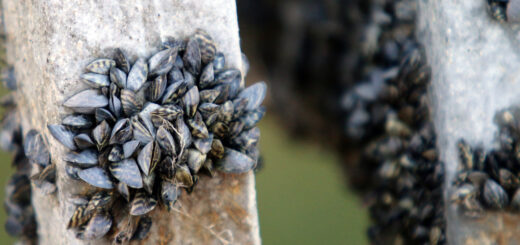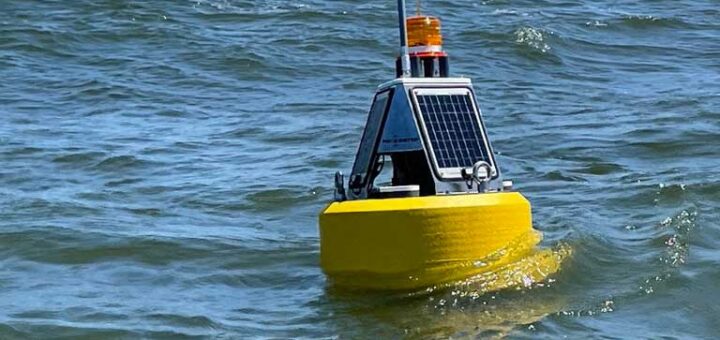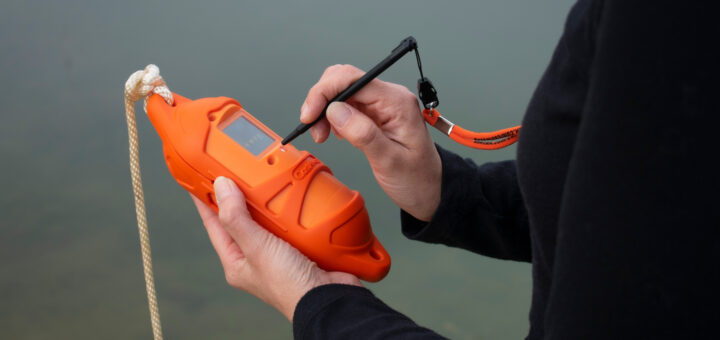Research Summary: Introgressive Hybridization And The Evolution Of Lake-Adapted Catostomid Fishes
0Abstract
Hybridization has been identified as a significant factor in the evolution of plants as groups of interbreeding species retain their phenotypic integrity despite gene exchange among forms. Recent studies have identified similar interactions in animals; however, the role of hybridization in the evolution of animals has been contested. Here we examine patterns of gene flow among four species of catostomid fishes from the Klamath and Rogue rivers using molecular and morphological traits. Catostomus rimiculus from the Rogue and Klamath basins represent a monophyletic group for nuclear and morphological traits; however, the Klamath form shares mtDNA lineages with other Klamath Basin species (C. snyderi, Chasmistes brevirostris,Deltistes luxatus). Within other Klamath Basin taxa, D. luxatus was largely fixed for alternate nuclear alleles relative to C. rimiculus, while Ch. brevirostris and C. snyderi exhibited a mixture of these alleles. Deltistes luxatus was the only Klamath Basin species that exhibited consistent covariation of nuclear and mitochondrial traits and was the primary source of mismatched mtDNA in Ch. brevirostris and C. snyderi, suggesting asymmetrical introgression into the latter species. In Upper Klamath Lake, D. luxatus spawning was more likely to overlap spatially and temporally with C. snyderi and Ch. brevirostris than either of those two with each other. The latter two species could not be distinguished with any molecular markers but were morphologically diagnosable in Upper Klamath Lake, where they were largely spatially and temporally segregated during spawning. We examine parallel evolution and syngameon hypotheses and conclude that observed patterns are most easily explained by introgressive hybridization among Klamath Basin catostomids.
Introduction
While hybridization has generally been viewed as a force that erodes biodiversity, several authors [1–4] have hypothesized that effects of introgression are not always negative, and that introgressive hybridization can be a creative factor during the evolutionary process [5]. This perspective has been especially common in the botanical literature, and plant biologists have noted that there are groups of interbreeding species (termed syngameons) that maintain their ecological, morphological, genetic and evolutionary consistency in spite of extensive hybridization [5,6].
Introgressive hybridization significantly confounds our ability to recover accurate phylogenetic relationships [7]. Specifically, introgression results in discordant patterns of variation among loci and traits, with incongruence depending upon the adaptive significance of specific variants [8,9]. Neutral markers could flow freely across species boundaries and frequencies of different alleles would be influenced by genetic drift and biased introgression. Markers and traits under selection would be influenced by local processes, resulting in rapid fixation or loss of variants in specific adaptive and detrimental backgrounds, respectively. Therefore, traits under selection can persist in the face of strong gene flow [10], resulting in a mosaic of introgressed and locally adapted genetic variants within genomes of various species.
Alternatively, apparent discordance of characters could also arise from sympatric speciation, driven by divergent selection at specific localities. While allopatric speciation has become the null model for speciation theory [11], sympatric speciation has gained increased acceptance, and recent debate has shifted to frequency of occurrence [12]. Sympatric models have a strong local component, where positive selection potentially generates parallel evolution of different morphotypes across geographic locations. This process has been hypothesized to be important in several groups of fishes [13]; however, genomic data has indicated that this mode of speciation may not be as common in fishes as once thought and systems that were once thought to have evolved through sympatric speciation appear to reflect diversity from multiple colonization events [14].

Aerial view of Upper Klamath Lake, near Klamath Falls, Oregon. (Credit: U.S. Bureau of Reclamation)
Seehausen [2] hypothesized that some of the diversity in African Rift Lake cichlids resulted from introgressive hybridization. These species have undergone cycles of allopatric speciation, created by uplift and wet-dry cycles, followed by periods of sympatry [15]. Reproductive isolation in this group is often driven by sexual selection on male coloration and could have been disrupted by turbidity. During times of increased turbidity, increased hybridization would lead to the generation of hybrid swarms. As environmental conditions changed (e.g., water cleared), sexual selection would become significant again, leading to the observed radiation [2]. Trophic polymorphisms, which are usually the basis for adaptive speciation [16–18], seem especially common in lake fishes and can lead to rapid speciation (<15,000 yr [19]). Rapid, parallel evolution of morphology, such as reduced body plates in freshwater Gasterosteus aculeatus, can also result from selection on alleles that are rare in ancestral forms [20].
The key difference among introgressive hybridization and parallel evolution could be identified by examining patterns of covariation across markers. Under a model of parallel evolution, local pairs share a common evolutionary history; therefore, one would expect them to exhibit covariation of independent neutral traits, yielding correlations among all characters and geography. If patterns result from introgression among forms that evolved in allopatry, some neutral characters would be correlated with geography (with the level depending upon the amount of gene flow) due to gene exchange among forms while others would reflect past history of divergence accumulated during isolation (especially if they are maintained by selection). Therefore, if hybridization has been important, there would be an association among traits and geography for some characters, with the remainder discordant with geography, reflecting past isolation and divergence.
Fishes within the family Catostomidae (e.g., suckers) are exceptionally well-suited for assessing the potential role of introgressive hybridization in evolution. Hybridization among members is common [7, 21–23], raising the possibility that gene exchange could influence patterns of variation and play a significant role in the evolutionary process. In addition, all members of the family are tetraploid, thought to have originated through hybridization more than 50 million years ago [24]. As in many plants, duplicate copies of genes allows for adaptive genomic diversification [25, 26], creating opportunities to acquire adaptive variants that would be unavailable in most other systems involving introgressive hybridization. These combined characteristics make systems of catostomin hybridization especially valuable for investigating a broad spectrum of potential influences of introgression in animal evolution.
Smith [27] used morphological and meristic characters to reconstruct phylogenetic relationships among species in the subfamily Catostominae, identifying two major phylogenetic lineages (Fig 1). Members of the Chasmistes lineage (including Chasmistes, Deltistes, and Xyrauchen) are found in large bodies of water in western North America. These species are typified by morphological modifications that are presumably adaptations for successful persistence in these habitats. Species of the Chasmistes lineage also possess trophic modifications (reduction in lip fleshiness, terminal mouths, and numerous modified gill rakers) that are thought to be adaptations for pelagic lake feeding (Fig 2). This lineage is represented by five extant taxa, with fossil representatives tracing back 9 million years [7, 28–30]. The other lineage (Catostomus,Fig 1) is more speciose (26 species), with its members lacking such trophic modifications (Fig 2). It is widely distributed throughout streams and rivers of North America, though the majority of diversity is concentrated in the western United States and northern Mexico.
The situation in the Klamath River Basin of the northwestern United States (Fig 3) makes it well suited for the study of hybridization in these fishes. This basin has a diverse catostomin fauna, represented by three genera and four species (Fig 2), with three of the species endemic to this basin. The two representatives of the Catostomus lineage are primarily stream forms: C.rimiculus Gilbert & Snyder 1898 (Klamath Smallscale Sucker) is found allopatrically in the Rogue River and parapatrically with the other species in the Klamath River, mainly below Upper Klamath Lake (only one specimen is known from the lake); and C. snyderi Gilbert 1898 (Klamath Largescale Sucker) occurs mostly in streams above Upper Klamath Lake and in the Lost River sub-basin (occasional specimens are taken downstream in Klamath River), including a parapatric population in the Upper Williamson River above Klamath Marsh. Two members of the Chasmistes lineage, Chasmistes brevirostris Cope 1879 (Shortnose Sucker) and Deltistes luxatus Cope 1879 (Lost River Sucker), are primarily found sympatrically in Upper Klamath Lake and in the Lost River sub-basin, with occasional specimens in downstream Klamath River reservoirs. Phenotypically intermediate individuals between all species in the basin have been observed [27, 28, 31], making identifications difficult, especially for some species in certain geographic areas (e.g., Ch. brevirostris and C. snyderi in Gerber Reservoir in the Lost River sub-basin [31]). In addition, levels of microsatellite divergence among these four species are comparable to those normally associated with intraspecific populations [32].
We present results from a multi-institutional collaborative study initiated to assess the patterns of genetic variation within and among species of Klamath Basin suckers. In the following, we conduct a joint population and phylogenetic analysis of anonymous nuclear DNA, mitochondrial DNA, and morphological data to further examine the evolutionary dynamics of the Klamath sucker complex. Characterization of patterns of molecular and morphological variation within species and direct contrasts of variation among these four species allows for assessment of the extent and direction of introgression and the role of hybridization in the evolution of this morphologically diverse complex of fishes.
Full study, including methods, results and discussion, published under open-access license in PLOS ONE.













